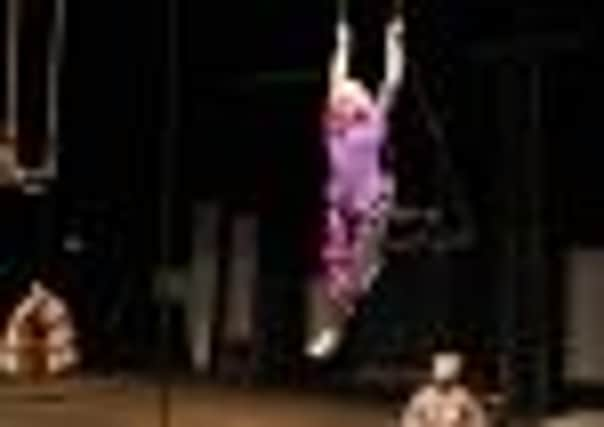Review: Giant and the Bear


There is no denying the Giant and the Bear is an entertaining, fun piece of work. It engages, as ringmaster Jon Spooner implores we be children of all ages. It is mesmerising, funny and a brilliant example of the power of theatre to bring audiences together.
I’m just not entirely convinced it’s theatre.
This, clearly, necessitates a definition of what theatre is, and there is too much theory out there and not enough space here to go into that, but it should certainly include a narrative and performance – which Giant and the Bear, in part, does.
Advertisement
Hide AdAdvertisement
Hide AdThe problem comes when the belly of the beast, the circus part of the show begins.
It is impressive and wonderful and watching human beings commit extraordinary acts is always something quite magical – but when you are watching that which you could see in a big top it does make you wonder whether you are just watching a circus rather than a piece of theatre?
Giant and the Bear, by Unlimited Theatre company, was commissioned by Imove, the cultural Olympiad for Yorkshire and is the reason why the last month has seen the Quarry Hill car park of West Yorkshire Playhouse dominated by a big top.
A specially built circus tent, it played host to the Giant’s Circus, the giant being a Wizard of Oz figure, the man with the pulleys and ropes behind the curtains, it transpired was ringmaster Jon Spooner.
Advertisement
Hide AdAdvertisement
Hide AdThe narrative is a fantastical story about how bears once ruled the air.
These days, for good reason, they must always stay on roller skates and are forbidden from flying.
Played by Sebastian Lawson, in a piece of clowning so brilliant that you would be hard pushed to find anything as committed outside a Gaulier school, the bear is stunningly good to watch. Wearing no more than a fuzzy hat, I was convinced I had actually seen Colin the Bear.
The circus performers are very good at what they do – but that’s to be expected. What the show needed was a stronger narrative to give them a reason to do what they did – and utlimately us a reason to care.